The components of a ticket turnstile are as follows:
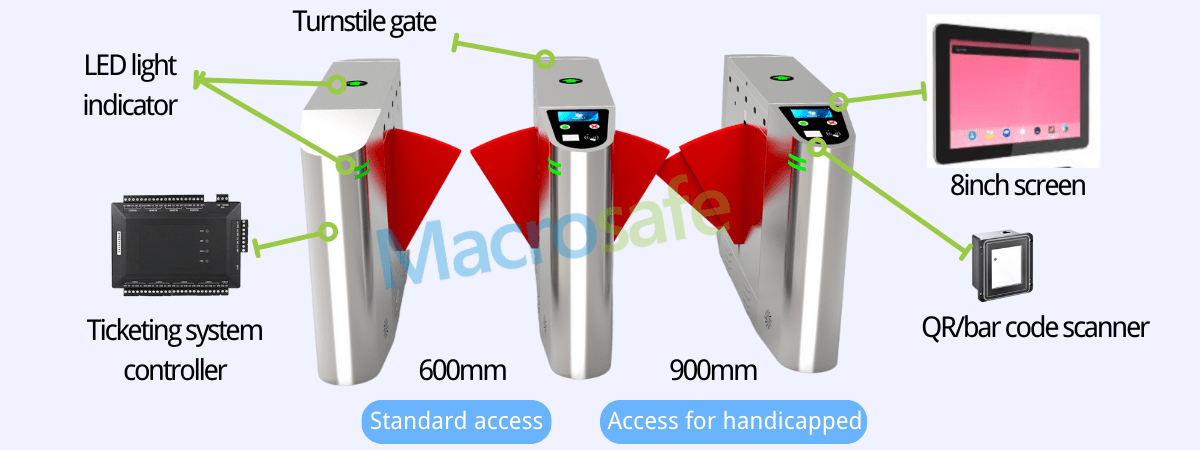
1. Turnstile gate: Controls access and allows entry or exit based on ticket validation.
2. Ticket controller: Manages ticket validation and interacts with other system components.
3. Screen: Displays instructions, ticket information, or error messages to users.
4. QR code/barcode scanner: Scans and validates tickets through QR codes or barcodes
5. LED indicator: provides visual confirmation of ticket status.
6. Speaker: Provides audio prompts, alerts, or instructions to users.
Basic tripod turnstiles or waist-height turnstiles can start at a few hundred dollars per unit, while more advanced full-height turnstiles or optical turnstiles with sophisticated ticket validation and access control features can range from one thousand to several thousand. Welcome to contact us to get a qutoation for your needs.
The communication protocol between the turnstile controller and the third-party server involves a series of HTTP requests and server responses.
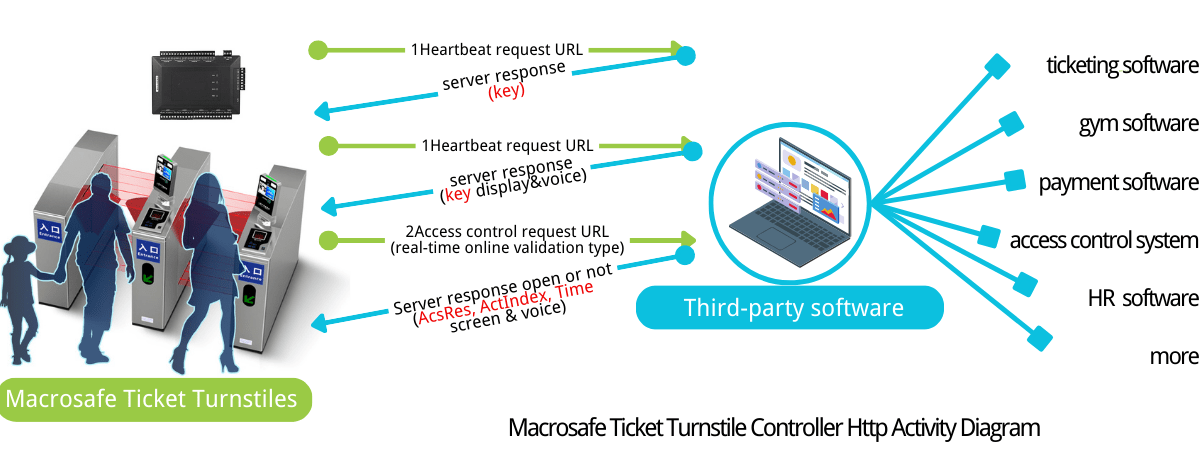
Firstly, the turnstile controller initiates a heartbeat request to the server, prompting a response containing a key. Subsequently, another heartbeat request is made, resulting in a server response that includes the key for both display and voice outputs.
Finally, the turnstile controller sends an access control request to the server, which then responds with information regarding whether access is granted or denied. The server's response includes access result (AcsRes), action index (Actindex), time, as well as screen and voice instructions.
This formalizes the process of communication between the turnstile controller and the third-party server in a professional manner.
When considering buying ticket turnstiles, Macrosafe is the best choice due to our extensive experience as a professional manufacturer with a team of experienced R&D engineers. Our turnstiles are designed with precision and innovation, ensuring reliability and advanced functionality.
Macrosafe's commitment to quality and customer satisfaction sets us apart in the industry. Additionally, our customer support and after-sales service guarantee a smooth and efficient experience. Contact us now.
The turnstile ticketing system is a advanced electronic solution designed to facilitate the management of entry and access control through the use of QR codes or barcodes as digital tickets. By integrating ticketing software with turnstiles, the system enables online ticket sales, validation, inquiry, data aggregation,flow control, statistical analysis, report generation, and anti-counterfeiting measures.
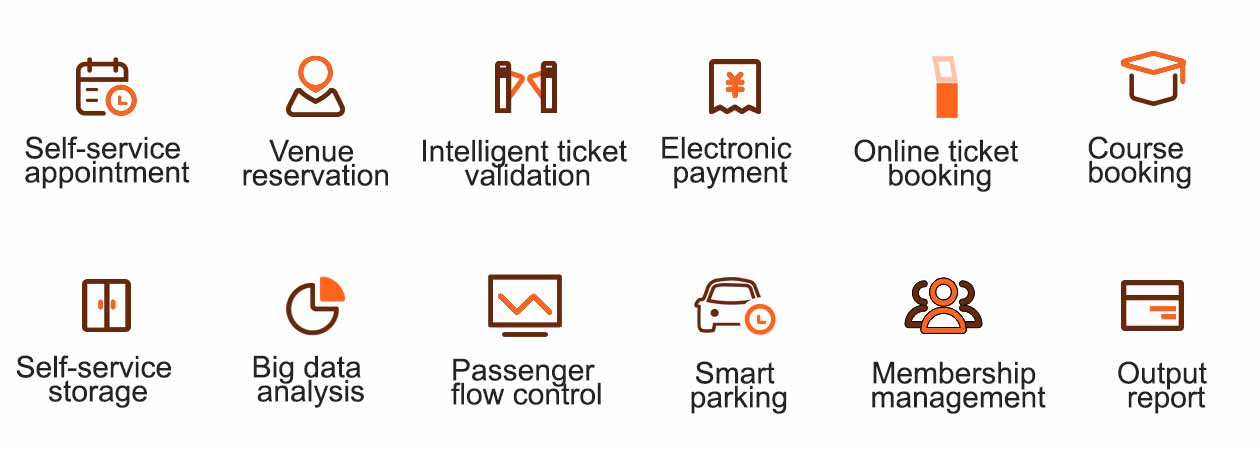
The turnstile ticketing system is essential for managing access control and revenue collection in various facilities, such as amusement parks, stadiums, transportation stations, etc. Without implementing a turnstile ticketing system, a facility may encounter several issues:
Without a turnstile ticketing system you might have many issues:
1. Unauthorized entry: Without turnstiles, individuals might enter the facility without paying or providing necessary credentials, leading to potential revenue losses and crowding.
2. Slow efficiency: Manual ticket checking can result in slow processing times, leading to bottlenecks at entry points, especially during peak hours, hampering the overall flow of visitors.
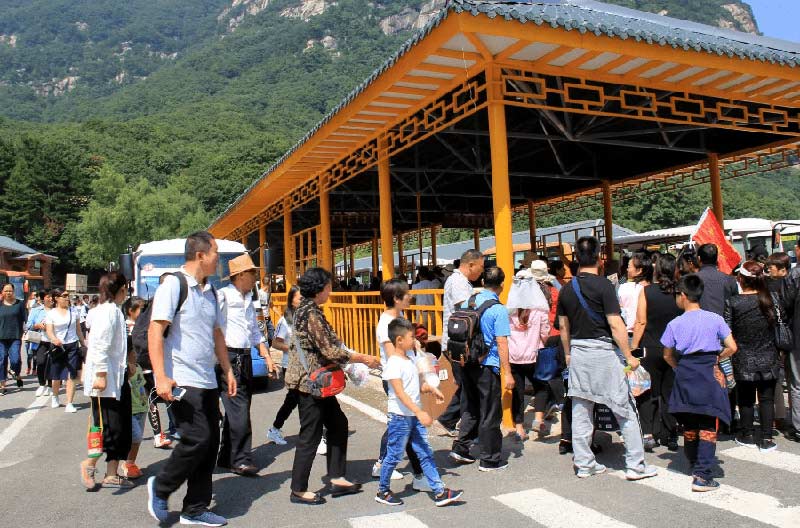
3. Revenue loss: A facility without a ticketing turnstile system may experience decreased revenue due to people bypassing payment or exploiting the lack of control at entry points.
4. Difficulty in attendance tracking: Turnstile ticketing systems provide valuable data for attendance tracking, which is crucial for planning and resource allocation. Without this system, it becomes arduous to accurately monitor visitor numbers.
5.Security concerns: Lack of access control can pose security risks as it becomes challenging to monitor and regulate the flow of people entering and exiting the premises.
Implementing a turnstile ticketing system can alleviate these issues by ensuring access control, enhancing security, improving revenue collection, and providing valuable data for facility management.
1. Barcode&QR code: Suitable for events and venues where quick and efficient ticket scanning is required, such as concerts, festivals, fitness club and theme parks.
2. Facial recognition: Best suited for high-security events or venues where personalized access control is necessary, such as government facilities, corporate offices, and exclusive clubs.
3. Fingerprint recognition: Ideal for venues requiring secure and individualized access, like sports facilities, gyms, and restricted office spaces.
4. Cards: Versatile for various events and venues, including hotels, resorts, and membership-based clubs where physical card access is preferred.
Addressing accessibility in ticketing turnstiles for persons with disabilities involves implementing various features to ensure that individuals with diverse mobility needs can easily access the turnstiles. Here are some key considerations:
1. **Wide Access Gates**: Install wider turnstiles to accommodate wheelchairs and mobility devices. For example, swing barrier or speed gates can provides at least 32 inches wide to allow easy passage.
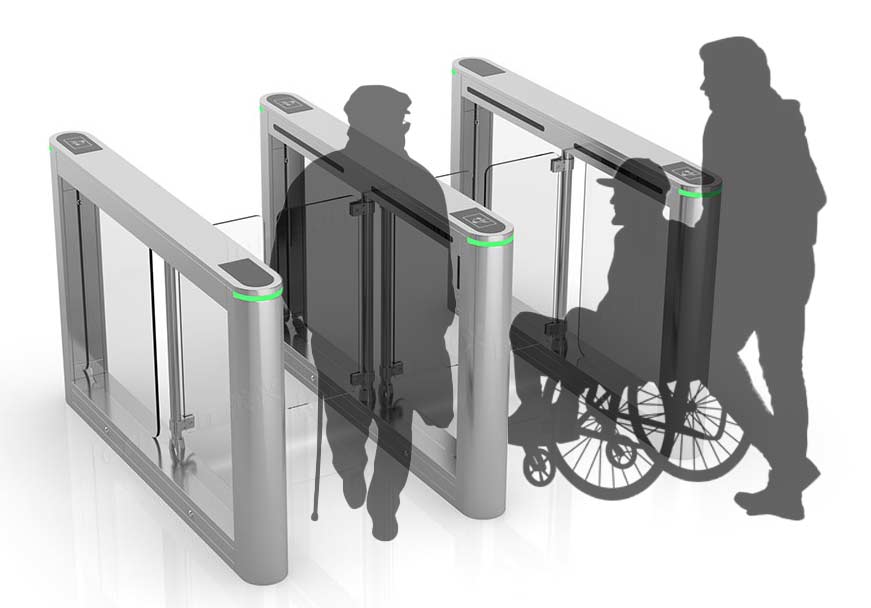
2. **Low-Height Turnstiles**: Incorporate turnstiles with low height or retractable barriers to facilitate access for individuals with mobility aids, like canes or walkers.
3. **Assistive Technologies**: Implement RFID cards, QR codes, or other digital technologies that allow for hands-free access, eliminating the need for physical contact or the ability to manipulate small objects, which can be challenging for some individuals with disabilities.
4. **Audio and Visual Cues**: Provide audible and visual signals to guide individuals through the turnstiles. This can include auditory instructions and bright, contrasting colors for individuals with low vision.
5. **Tactile Indicators**: Integrate tactile indicators to assist individuals with visual impairments in locating and navigating the turnstiles effectively. This can include braille labels and tactile paving at entrances.
6. **Accessible Ticketing Machines**: Ensure that ticketing machines are at an accessible height, have tactile buttons, and feature audio output for individuals with visual or dexterity impairments.
7. **Training and Staff Support**: Train staff to assist individuals with disabilities in using the turnstiles when needed, and ensure that they are knowledgeable about accessibility features and how to operate them.
8. **Regular Maintenance**: Regularly maintain and inspect the turnstiles to ensure that accessibility features are fully functional and in compliance with accessibility standards.
By incorporating these features and considerations, ticketing turnstiles can become more friendly and accessible for persons with disabilities, enhancing their overall experience.
1. Hardware and Software: Selecting the appropriate hardware and software is crucial. The turnstiles themselves need to be durable and reliable, with accompanying ticket validation systems that integrate seamlessly with the turnstile operation.
2. Ticketing Technology: Decide on the ticketing technology to be used, such as magnetic stripe cards, RFID cards, or mobile tickets. Each has its own requirements and cost implications.
3. Integration with Existing Systems: Ensure that the turnstile ticketing system can integrate with existing access control, payment, and ticketing systems if applicable.
4. Security: Security is paramount. The system should be designed to prevent unauthorized access and fraudulent activities, such as ticket duplication or tampering.
5. User Experience: Consider the ease of use for customers. The ticketing system should be intuitive and convenient, minimizing queues and wait times.
6. Maintenance and Support: Plan for ongoing maintenance and technical support to address any hardware or software issues promptly.
7. Compliance and Regulations: Ensure that the system complies with relevant regulations and standards, especially regarding data protection and accessibility.
8. Scalability: Consider the potential for future expansion and scalability of the turnstile ticketing system to accommodate increased demand or additional features.
By carefully considering these factors, a well-implemented turnstile ticketing system can streamline access control and ticket validation processes while enhancing the overall user experience.